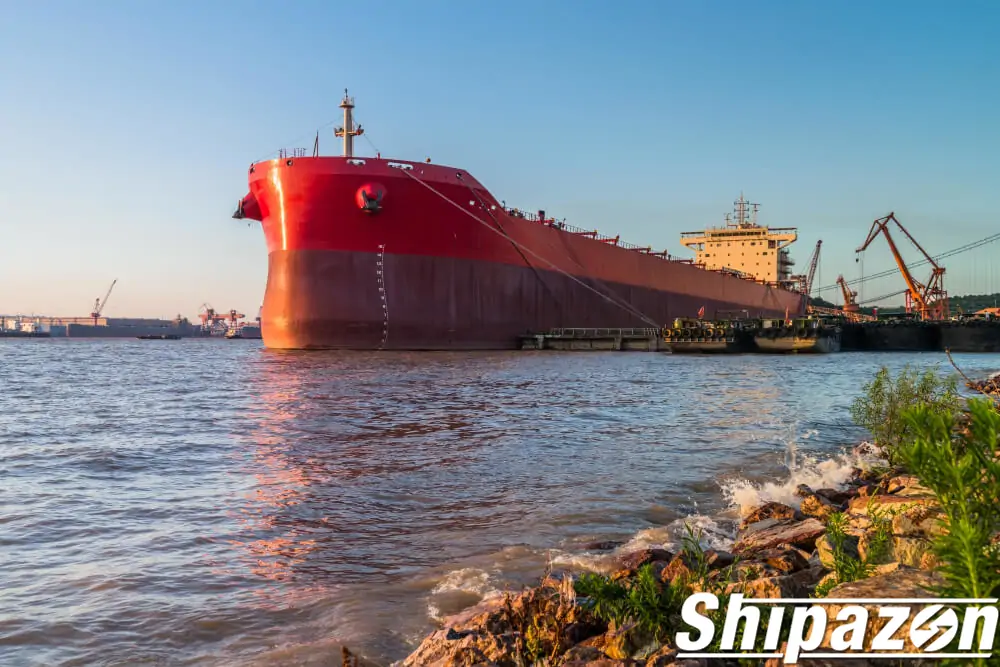
Have you ever thought about how chemicals such as methanol and palm oil can travel thousands of kilometers, from Asia to Europe, or from the Middle East to America? Most people only see the end products displayed on minimarket shelves, rows of medicines in pharmacies, or cans of paint in hardware stores. However, behind this global supply chain, there is a key player that plays an important role, namely chemical tankers, special ships tasked with transporting huge quantities of liquid chemicals.
Even though we are often unaware of the existence of chemical tankers, they are a vital fleet in the modern maritime industry. Without their involvement in the modern industrial world, the supply of raw materials for food, pharmaceuticals, cosmetics, and even energy would be disrupted.
Contents
What is a Chemical Tanker?
A chemical tanker is a ship specially designed to transport liquid chemicals, both hazardous and non-hazardous. Chemical tankers have a more complex system than crude oil tankers, which are tasked with transporting huge quantities of crude oil.
A chemical tanker is like a giant refrigerator containing hundreds of small shelves. Each shelf contains only one type of chemical. Why? Chemicals have the potential to react if they come into contact with each other. That is why each tank in a chemical tanker generally has a coating made of epoxy or stainless steel to maintain safety and prevent contamination.
Chemical tankers also have complex piping systems. Each cargo has a specific route to minimize the risk of mixing. The tank cleaning process uses advanced technology with automatic machines that can clean even the smallest corners.
Types and Capacities of Chemical Tankers
There are various types of chemical tankers. The International Maritime Organization (IMO) classifies these ships into three types: IMO Type 1, IMO Type 2, and IMO Type 3. IMO Type 1 ships are used to transport the most hazardous chemicals. Their structure is stronger and they have multiple layers of safety. IMO Type 2 is tasked with transporting chemicals with a medium level of risk, and IMO Type 3 is tasked with carrying chemicals with a low level of risk, such as palm oil or molasses.
The size of the ship also varies according to its capacity. Small chemical tankers have a capacity of less than 10,000 DWT. This type of ship usually operates on short routes. Meanwhile, giant ships can carry more than 40,000 tons of cargo. These ships are capable of intercontinental voyages. This variety in size allows chemical tankers to enter both small ports and large international terminals.
Challenges and Safety in Operations
Operating a chemical tanker is not an easy job. There are significant risks, ranging from cargo leaks and chemical spills into the sea to the potential danger of explosions due to chemical reactions. Therefore, every ship crew member must have special certification and follow very strict safety procedures.
One important system in chemical tanker operations is the inert gas system, which is a system to prevent explosions by filling the empty space in the tank with inert gas. Ships also use double hulls, so that if damage to the ship occurs, chemical liquids do not immediately leak into the sea.
Officers must ensure that the tanks are completely sterile before adding new chemicals as a precaution against cross-contamination. On a large scale, the operation of a chemical tanker resembles the management of a giant laboratory with thousands of times more capacity floating in the middle of the sea.
Vital Role in Global Industry
Chemical tankers play a crucial role in keeping the wheels of global industry turning, given that many industries depend on this fleet, from plastics, textiles, cosmetics, and pharmaceuticals to food and beverages. For example, Europe needs chemical tankers to transport palm oil from Southeast Asia as an ingredient for food and cosmetics.
The world also currently has a high demand for methanol because it is an environmentally friendly fuel. The mobilization of these commodities from one continent to another requires the presence of chemical tankers. That is why the demand for chemical tankers continues to increase over time.
In addition, the latest regulations from the IMO regarding emission reduction policies have encouraged shipping companies to invest in more modern and environmentally friendly chemical tankers. As a result, this fleet is not only important for today’s industry, but also has a major role to play in the global energy transition in the future.
Chemical tankers are truly the backbone of the global chemical distribution network. From the detergent you use at home, the medicine you take when you’re sick, to the alternative fuels touted as the future, all of it is connected through these ships.
The maritime industry is the heart of global trade, and chemical tankers are one of the driving forces behind it. Understanding the ins and outs of these ships means understanding how the world keeps moving. Are you interested in learning more about shipping and maritime technology?
